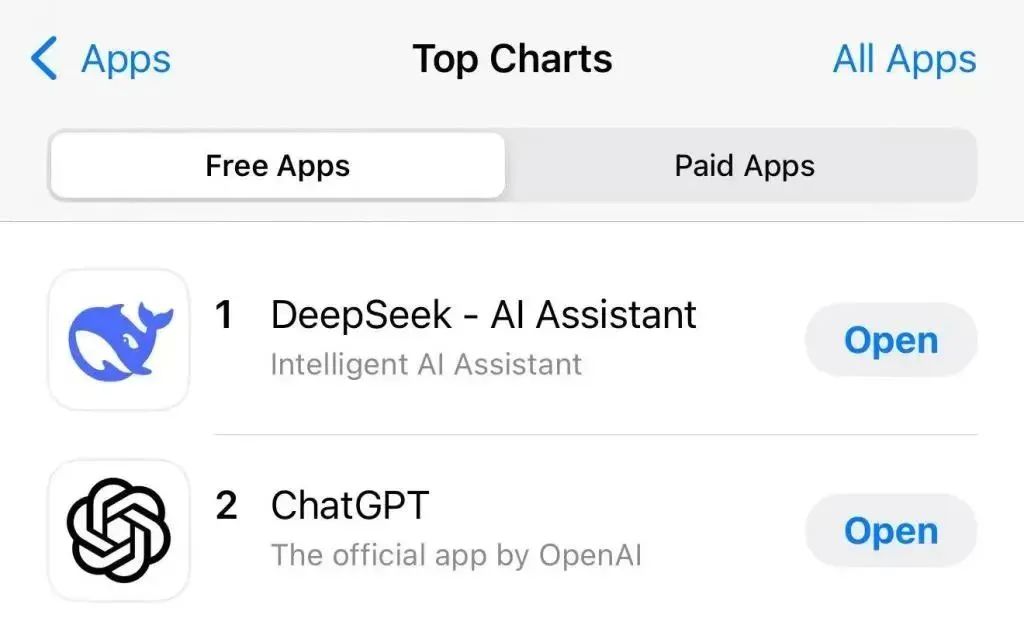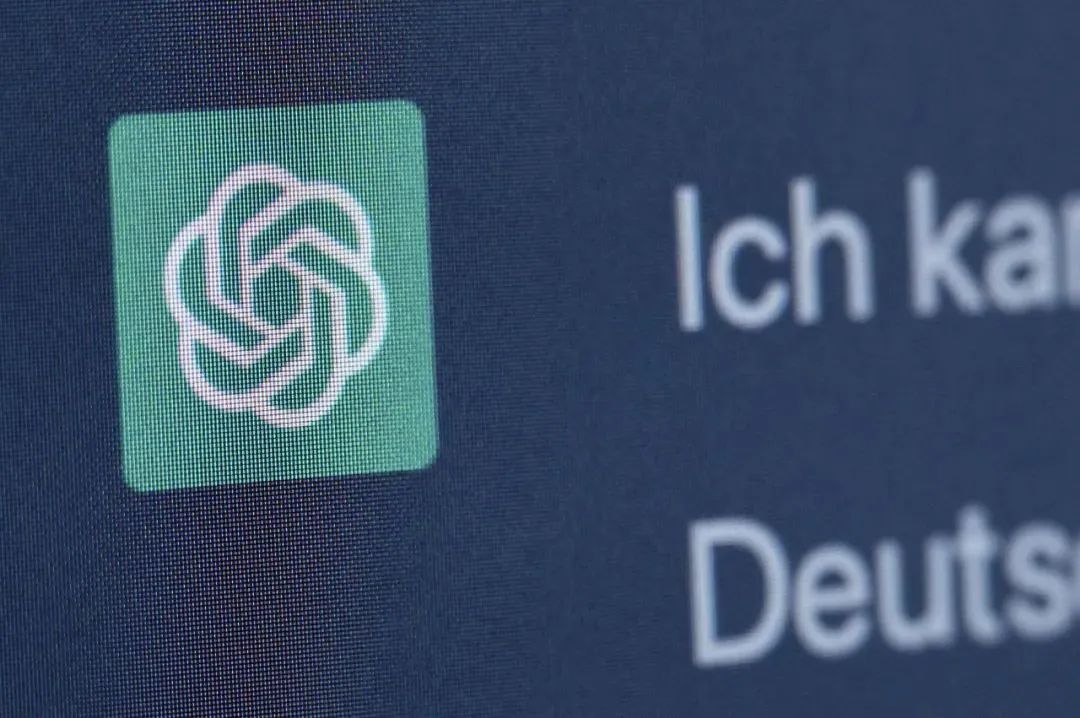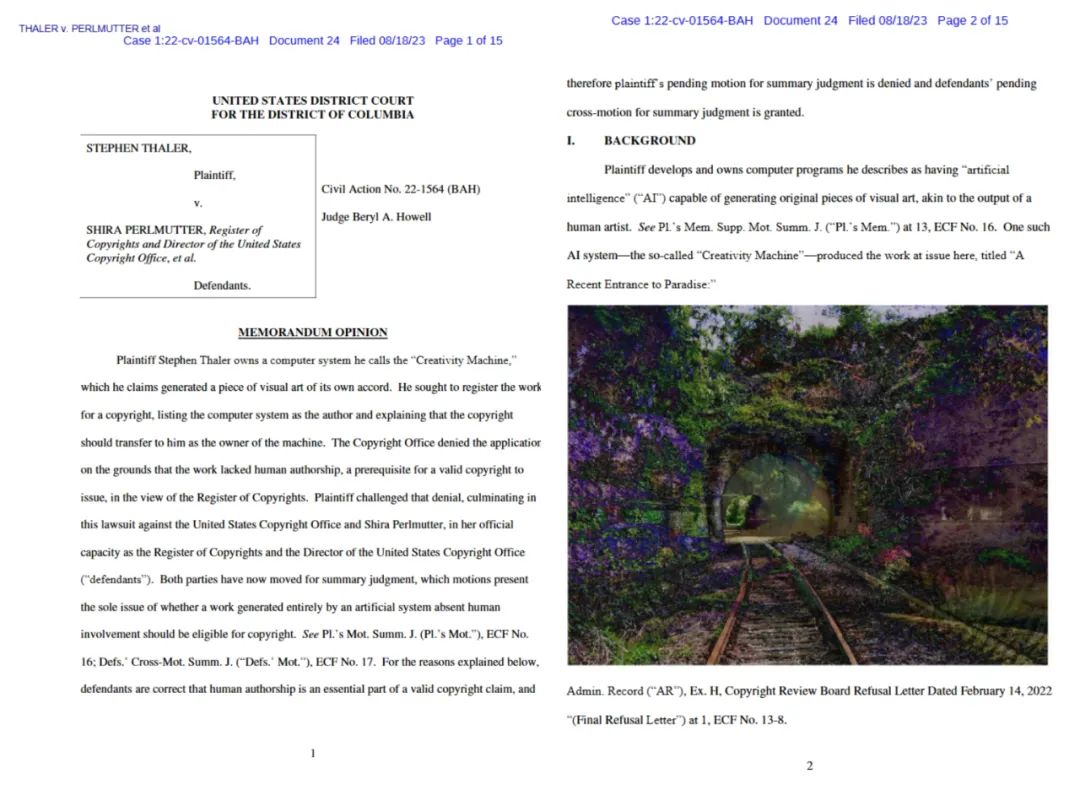Generative Artificial Intelligence (AIGC), including Large Language Models (LLMs), chatbots, and other types of content generators (collectively referred to as AI Big Model products), is a hot topic that is currently receiving a lot of attention and is clearly poised to become a future trend in many industries and fields.
These generative AI models are trained on large amounts of data from a variety of sources, which may include content such as copyrighted works, personal or sensitive data. Once the training is complete, these generative AI models can be asked questions or given prompts to generate content based on the data they have received analyzed and based on feedback from a human trainer.
For example, generative AI models like DeepSeek and ChatGPT can bring efficiency and speed to people's work by generating content quickly. However, big AI model products have the potential to produce both inaccurate and incorrect answers, content that is subject to intellectual property disputes, and even data breaches due to answers that contain important and sensitive information, demonstrating both the incredible potential that generative AI offers and revealing the multi-layered risks that are embedded within it. The following article explores the legal compliance challenges posed by generative AI, using both the data governance and intellectual property aspects of this new phenomenon as entry points.

▲ Image courtesy of Apple's US App Store
1 The Whole Process of Data Governance for Generative AI Data is the cornerstone of AI, and the direct or indirect application of data runs through the whole life cycle of generative AI.The data compliance issues involved in this process are complex, including training of large models of AI algorithms, data processing during model application, and model optimization using data.Typically, this process also involves multiple parties such as developers, service providers, and users of generative AI systems.

▲ Figure source network
In response to this challenge, major economies around the world are exploring data management models in AI through legislation and judicial practice.For example, the European Union passed the Artificial Intelligence Bill on June 14, 2023 as well as the Data Bill on November 9, 2023
These bills, as part of the EU's overall data legislation program, explore the combination of data and AI on the basis of the GDPR. The bill applies to all types of AI as part of a regulatory offering that will not grant rights to individuals, but will regulate providers of AI systems, as well as entities that use them in a professional capacity. Across the ocean, the release of the AI Risk Management Framework (AI RMF) by the National Institute of Standards and Technology (NIST) marks an important milestone in the field. The introduction of this framework brings a more systematic and standardized approach to the development and application of AI systems.
By clarifying the lifecycle of an AI system, the players at each stage, and the key dimensions, the AI RMF provides a comprehensive path for assessing the risk management of AI. The emergence of this framework means that potential risks can be more accurately identified and managed when designing, developing, deploying and operating AI systems. This is essential to ensure the safety, reliability and interpretability of AI systems. Correspondingly, China also released the Interim Measures for the Administration of Generative AI Services (hereinafter referred to as the Interim Measures) on July 13, 2023, and on August 15, 2023, it officially came into force.
1.1 Data Compliance in the Model Training Phase
From a microscopic point of view, data governance for generative AI is mainly divided into two phases, the first of which is the collection, classification, cleaning, and labeling of data during the initial model training process, which is centered on the compliance of data sources. Generally speaking, although the large models used in the training phase will not directly participate in market activities, Article 7 of the Interim Measures clearly requires that large model service providers and developers must “use data from legitimate sources and the underlying models”, so data used in the training phase of large models cannot be considered as constituting “reasonable use” of the data. Therefore, it cannot be assumed that data used in the training phase of the big model constitutes a “reasonable use” of the data, thus alleviating the obligation of data collection compliance in the training phase of the model.
Currently, most commercial big model training data comes from either direct or indirect data collection or data crawling by web crawlers. If the data is collected directly or indirectly, it is necessary to ensure that the requirements of the Personal Information Protection Law and the Data Security Law on the legitimacy of the data source are met, that the data users fulfill their obligations to protect the data subjects, that the transparency requirements are met and that the legitimacy of the data collection is based on the avoidance of the use of personal information that is not legally disclosed or classified information.
If the data is captured by crawlers, the risk is relatively large, first of all, if the crawler data collection process utilizes IP proxies, forged UA, etc. to bypass the target website's Robots protocol or other anti-crawler measures to capture, thus interfering with the normal operation of the website to be crawled, which may constitute the “hindering and destroying the normal operation of network products or services” under the “Anti-Unfair Competition Law”, and thus may constitute the “hindering and destroying the normal operation of network products or services” under the “Anti-Unfair Competition Law”. This may constitute unfair competition under the “Anti-Unfair Competition Law” by “obstructing or destroying the normal operation of other operators' network products or services”; secondly, if the content of the crawled content constitutes personal information, it is likely to constitute the “illegal collection of personal information” due to the inability to satisfy the legitimacy of the basis for collecting personal data; and in addition, if it crawls data of which others have In addition, if, without the permission of the right holder, the copyrighted data of others is crawled and displayed in the output after being integrated into the training model, it may constitute an infringement of the copyright of others; finally, if the data crawling behavior bypasses the anti-crawler system or interferes with the normal operation of the server system by technical means, it may also constitute a criminal offense.
Therefore, even in the internal training stage before the formal market launch, generative AI should do multi-type hierarchical management of data sources, and do targeted labeling and cleaning of training data in accordance with the relevant laws, to ensure that the training data sources of the model are legal and compliant as much as possible, to improve the transparency, interpretability, and fairness of the data labeling and cleaning, and the training stage of the model, and to respond to the regulation, thus establishing a good gene for the subsequent use of the product. The subsequent use of the product to establish a good gene.
1.2 Data Compliance in Product Operation and Model Optimization Phases
Generative AI is put on the market after the model has been trained, both to provide services to the general public and potentially to further optimize the model through user feedback during operation.The model product will interact with a large amount of user-input data during the operation phase, which in turn may be integrated into the training model itself, become part of the larger model product, and be disclosed to the public from time to time in the subsequent provision of services to other users.

▲ Figure source visual China
Taking ChatGPT as an example, OpenAI will collect personal information such as user account information, communication information, social media information, log information, usage, device information, cookies, and other personal information to simultaneously realize the user's needs as well as the iterative training of its big language model itself.In this process, users enter a variety of content that may contain their personal information and other business information, and even classified information.
Article 11 of the Interim Measures stipulates that generative AI service providers should comply with personal information protection requirements, prohibit the “illegal retention” and “illegal provision” of personal data, and emphasize the “necessity” of information collection.Therefore, in the process of product operation, it is still necessary to ensure that the transparency and legality of the collection and use of personal information are met in accordance with the relevant data regulations, such as informing the users of generative AI services of the rules for the handling of personal information through the privacy policy and obtaining the users' explicit consent in the form of a tick box, so as to provide the legality necessary for the provision of a full set of services.Foundation.
The introduction of this framework brings a more systematic and standardized approach to the development and application of AI systems. By clarifying the lifecycle of an AI system, the players at each stage, and the key dimensions, the AI RMF provides a comprehensive path for assessing the risk management of AI.The emergence of this framework means that potential risks can be more accurately identified and managed when designing, developing, deploying and operating AI systems.This is essential to ensure the safety, reliability and interpretability of AI systems.
Correspondingly, China also released the Interim Measures for the Administration of Generative AI Services (hereinafter referred to as the Interim Measures) on July 13, 2023, and on August 15, 2023, it officially came into force. 1.1 Data Compliance in the Model Training Phase From a microscopic point of view, data governance for generative AI is mainly divided into two phases, the first of which is the collection, classification, cleaning, and labeling of data during the initial model training process, which is centered on the compliance of data sources.Generally speaking, although the large models used in the training phase will not directly participate in market activities, Article 7 of the Interim Measures clearly requires that large model service providers and developers must “use data from legitimate sources and the underlying models”, so data used in the training phase of large models cannot be considered as constituting “reasonable use” of the data.Therefore, it cannot be assumed that data used in the training phase of the big model constitutes a “reasonable use” of the data, thus alleviating the obligation of data collection compliance in the training phase of the model.
2 The Impact of Generative Artificial Intelligence on the Existing Intellectual Property Legal System
Generative
Artificial Intelligence is first involved in the fields of image,
music, film, text and other artistic creations, etc. AI can process
large-scale data and generate a large amount of content in a very short
period of time compared to human creators, who may take a much longer
period of time to accomplish similar tasks. This efficient creation
speed can accelerate the output and distribution cycle of content. In
addition AI can automate most of the creation process, thus reducing the
cost of content creation, while learning and drawing inspiration from
massive amounts of data to generate creative and novel content,
exploring different styles, themes, and structures, and providing
creators with new ideas and inspirations.AI can also automatically
customize content according to users' needs, and produce personalized
works. This convenience has allowed generative AI to rapidly gain
traction in the content creation industry, but it has also had a
significant impact on the centuries-old intellectual property legal
system.

▲ Figure source network
2.1 Copyrightability of AI-Generated Works
STEPHEN THALER v. SHIRA PERLMUTTER
Since
the artworks generated by generative AI products are sampled from the
existing data in the large model and automatically generated by AI, it
is difficult to determine whether such generative works have the
“originality” as stipulated in Article 3 of the Copyright Law, and
whether they can be categorized as “intellectual achievements” of human
beings. and whether they can be categorized as “intellectual
achievements” of human beings. From the judicial practice of major
economies in China, the United States and Europe, there are relevant
judgments that support the copyright of such works, such as China's
(2019) Yue 0305 Minchu 14004 judgment court recognized the use of AI
software to write financial news reports of copyrightability; at the
same time, there are also jurisprudence that does not recognize the
copyright of AI-generated works, such as the U.S. District Judge Beryl
A. Howell in STEPHEN THERESIS, the court of appeals in the case of the
United States, the court of appeal in the case of the United States
District Court of the United States of America. Howell in STEPHEN THALER
v. SHIRA PERLMUTTER. Summarizing these jurisprudence, it is not
difficult to find that for whether AI-generated works are copyrightable,
the focus is on whether the works contain human creative elements.

In the judgments that do not recognize AI works as copyrightable, it is generally accepted that works generated by automatic operation are created entirely by machines or purely mechanical processes, without any creative input or intervention from human authors, and therefore do not have human intellectual output. In contrast, a work can only be protected by copyright law if it contains elements of human creativity. Of course, for more complex cases, such as secondary screening of generated content using nested AI software, the degree of human involvement in generating the work needs to be further assessed. Therefore, the criteria for determining the extent of human participation in creation that constitutes a copyrightable work still needs to be explored and guidelines developed in future judicial practice.
2.2 Attribution of Copyright Rights in AI-Generated Works
Generative
AI-generated works have the participation of data sources, model
developers and product users, so if the AI-generated work meets the
criteria of human intellectual input mentioned above, to whom should the
copyright of the work belong?
The law does not make clear provisions on this issue.
Generative
AI product providers will generally agree on the attribution of
AI-generated content through user agreements, for example, OpenAI
clearly stipulates in its user agreement: “OpenAI transfers all rights
and interests in the output content to the user, and OpenAI may use the
content based on the provision and maintenance of services.Given the
nature of machine learning, similar questions may result in identical
responses.Requests and generated responses from other users are not
considered unique user content.” OpenAI's strategy is to cede the rights
to the generated content, while at the same time allowing itself to
avoid intellectual property disputes over possible rights flaws in the
AI-generated content itself.
Of course, in order to protect the
interests of developers, even if it is agreed that the rights and
interests in the AI-generated content are vested in the user, certain
big model products, such as Notion AI, may require authorization from
the user from the user agreement in order to perform operations such as
displaying, storing, distributing, reproducing, using, and modifying the
derivatives that the user creates through the AI product, so as to
enable the application developer to use the user's content for purposes
such as monetization, promotion and software upgrades. There are also
other software developers who choose to retain the copyright of the
AI-generated works and license commercial use only to paying users,
among other models, or directly contribute the works to the global
public domain through Creative Commons licensing agreements (e.g., the
CC0 1.0 agreement) so that others are free to use, modify, distribute,
and exploit the works, or even commercialize them, without obtaining the
copyright owner's priorwithout the prior permission of the copyright
owner.
For AI-generated works where there is no clear agreement on
rights attribution or where rights attribution is disputed, the
attribution of intellectual property rights is often confirmed through
judicial decisions, which often have different outcomes. In one case,
the court held that after the plaintiff obtained the authorization of
the generative AI software, multiple people from its team collaborated
and cooperated with each other in their respective roles, and cooperated
with the plaintiff's main creators to use the software to complete the
relevant textual works, and therefore, even if the text used the AI
generation tool, the user still enjoys the copyright of the textual
works; on the contrary, the court held in some cases that the
AI-generated content did not convey the software developer'sthoughts and
feelings of the software developer, and the software user only
automatically generates the content in the form of search, and there is
no original expression of the thoughts and feelings of the user given to
the content itself, so neither the developer of the large model
software nor the user of the product enjoys copyright in the
AI-generated content. It can be seen that, as with the copyrightability
of AI-generated works, the attribution of copyright in such works is
often determined in judicial practice by reference to the extent to
which the relevant participants have invested their human intellectual
activity in the work and have contributed to the originality of the
generated work.
2.3 Copyright infringement risk of AI-generated works
Since
generative AI big model products must use existing work data for model
training and generate AI-generated content based on the algorithmic
model formed by the training work, AI-generated content naturally and
inevitably carries memories or traces of the training data, and
AI-generated content may present some elements, features and styles of
the training work. It is generally recognized that if the content
provided by the AI is substantially similar in expression to the
training work and there is a possibility of interaction, there may be a
legal risk of copyright infringement, which, depending on the
circumstances, may constitute an infringement of the right of
reproduction, the right of dissemination through information networks or
the right of adaptation.
If the AI-generated work constitutes
intellectual property infringement, according to the general Civil Code,
the user of the infringing work, as the party at fault, bears the main
responsibility for the intellectual property infringement, while
according to the general principle of the assumption of responsibility
of network service providers, i.e., service providers are not required
to bear the responsibility for the infringing behaviors of the users who
utilize the network service, but should take timely measures to avoid
the expansion of damages in the event that the service providers know or
should have known of the infringing behaviors of the users.necessary
measures to avoid the expansion of damage.
If a generative AI service
provider is defined as a network service provider in the general sense,
the premise of its liability for infringement is that it “knew or
should have known” that the infringement existed.However, according to
Article 9 of the Interim Measures, the generative AI service provider
shall bear the responsibility equivalent to that of a “content
producer”, and actively fulfill its network security obligations. Of
course, in order to protect the interests of developers, even if it is
agreed that the rights and interests in the AI-generated content are
vested in the user, certain big model products, such as Notion AI, may
require authorization from the user from the user agreement in order to
perform operations such as displaying, storing, distributing,
reproducing, using, and modifying the derivatives that the user creates
through the AI product, so as to enable the application developer to use
the user's content forpurposes such as monetization, promotion and
software upgrades.
There are also other software developers who
choose to retain the copyright of the AI-generated works and license
commercial use only to paying users, among other models, or directly
contribute the works to the global public domain through Creative
Commons licensing agreements (e.g., the CC0 1.0 agreement) so that
others are free to use, modify, distribute, and exploit the works, or
even commercialize them, without obtaining the copyright owner's prior
without
the prior permission of the copyright owner. For AI-generated works
where there is no clear agreement on rights attribution or where rights
attribution is disputed, the attribution of intellectual property rights
is often confirmed through judicial decisions, which often have
different outcomes.
In one case, the court held that after the
plaintiff obtained the authorization of the generative AI software,
multiple people from its team collaborated and cooperated with each
other in their respective roles, and cooperated with the plaintiff's
main creators to use the software to complete the relevant textual
works, and therefore, even if the text used the AI generation tool, the
user still enjoys the copyright of the textual works; on the contrary,
the court held in some cases that the AI-generated content did not
convey the software developer's
thoughts and feelings of the software
developer, and the software user only automatically generates the
content in the form of search, and there is no original expression of
the thoughts and feelings of the user given to the content itself, so
neither the developer of the large model software nor the user of the
product enjoys copyright in the AI-generated content.It can be seen
that, as with the copyrightability of AI-generated works, the
attribution of copyright in such works is often determined in judicial
practice by reference to the extent to which the relevant participants
have invested their human intellectual activity in the work and have
contributed to the originality of the generated work.[...]
Judging
from the tendency of previous EU legislation, this bill is in line with
the EU's consistent style of strong regulation of the Internet industry,
i.e., to restrict the uncontrolled expansion of foreign Internet giants
such as Google and ChatGPT in the EU market through legislation, and to
emphasize the protection of personal freedom and individual rights.
Of
course, the EU's legislative tendency in this area is mainly due to the
fact that its development as a whole economy in the Internet era is
significantly lagging behind that of the United States and China, so its
legislative and law enforcement style of strong regulation of the data
network industry can maximize the protection of the EU's single market
from the disorderly expansion and monopoly of the Internet giants from
outside the region, thus increasing the EU's single market in the global
economy and political discourse power in the global economy and
politics.In contrast, the UK and US regulatory style for this market is
slightly different from that of the EU. The Blueprint for an AI Bill of
Rights issued by the US in 2022 and 2023, the National Strategic Plan
for Artificial Intelligence Research and Development, and the Biden
administration's first executive order issued in October 2023 all
emphasize the scientific and flexible nature of regulation, with the aim
of clearing the barriers to the application of AI technology and
promoting technological innovation. The aim is to clear the obstacles to
the application of AI technology and promote technological innovation,
insisting that the premise of regulation is to encourage the innovation
and development of AI, and in terms of specific regulatory details,
focusing on preventing the use of AI to design threats such as
biological or nuclear weapons, as well as emphasizing cybersecurity for
extraterritorial data exchange, while on the contrary, not placing
special emphasis on the protection of individual freedoms and rights.
The
UK's AI-related regulation, on the other hand, is very much in the
traditional British style of industry autonomy. The UK government
released the AI White Paper in March 2023, which advocates the formation
of non-legislative mandatory industry autonomy standards through
industry autonomy, and finally the transformation of industry standards
into legislation depending on the state of development of the industry,
but at present there is no unanimous agreement on the industry
guidelines in the UK, so the UK's legislation in the field of AI will be
pushed forward at a relatively slow pace.Through the above attitudes of
several mainstream economies to AI regulatory legislation, it is not
difficult to see that for the development of AI technology and digital
economy is relatively backward economy, its legislative concept is
mainly through strong regulation to reduce the impact of AI technology
on the local market, so take the path of regulation and then
development.Although AI service providers influence the content output
of the products through model training and parameter adjustment, for
users using the software and subjectively modifying the generated
content, AI service providers can not effectively control the content,
therefore, the semantics of the Interim Measures may make generative AI
product providers in the process of infringement of the works defined as
direct content producers rather than network service providers, which
undoubtedly creates a huge commercial risk for the service providers of
such products.
Therefore, the liability of big model service
providers in the infringement of AI-generated works still needs to be
further explored in legislation and judicial practice. JAVY3's
exploration of regulation of the generative AI industry At the 7th
Woodpecker Data Governance Forum, the Generative AI Development and
Governance Observation Report (2023) released by the Nandu Digital
Economy Governance Research Center highlights the heightened concern of
the whole society about the ethical governance of AI.
The report
pointed out a series of issues such as false information, algorithmic
discrimination, infringement of intellectual property rights, data
security, leakage of personal privacy, and employment impacts, which
have triggered even stronger concerns about the ethical governance of
AI.

▲
Figure source network In response to these issues, countries are
actively addressing the impact of the AI industry on society through
legislative means, but the regulatory focus of major mainstream
economies is slightly different.
The European Union, a pioneer in
data and AI-specific legislation, has recently finalized the legislative
process for the Artificial Intelligence Act.Based on the core concept
of “risk classification,” the bill requires companies that generate AI
to disclose any legally protected information and data used to develop
their systems.Judging from the tendency of previous EU legislation, this
bill is in line with the EU's consistent style of strong regulation of
the Internet industry, i.e., to restrict the uncontrolled expansion of
foreign Internet giants such as Google and ChatGPT in the EU market
through legislation, and to emphasize the protection of personal freedom
and individual rights.


© Beijing JAVY Law Firm Beijing ICP Registration No. 18018264-1